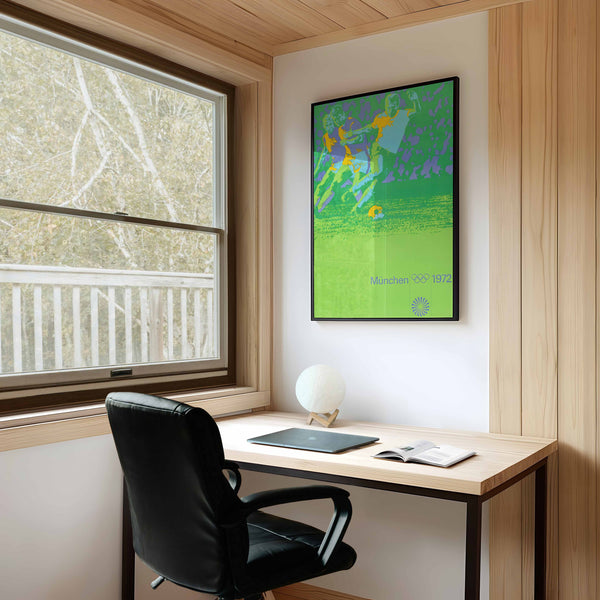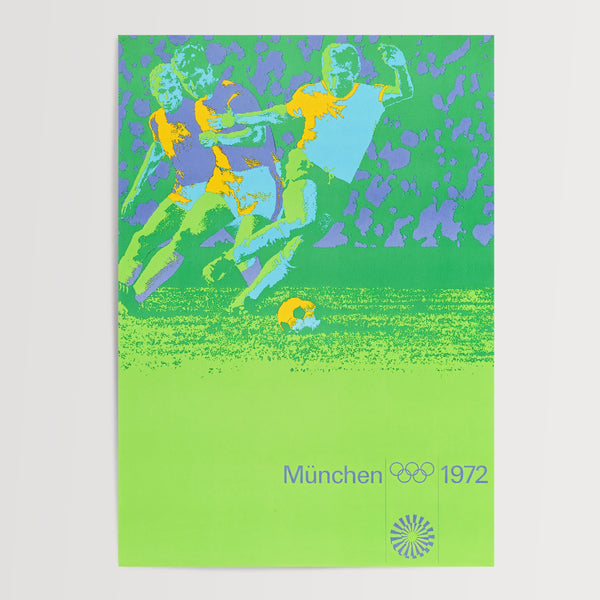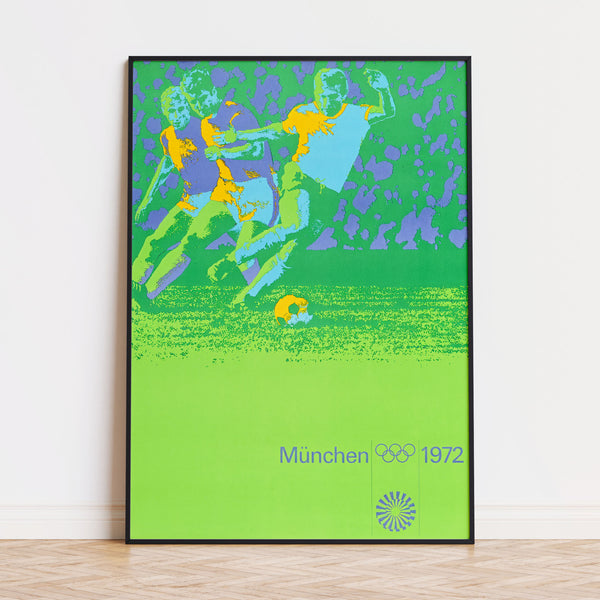
Football – Munich Olympics | 1972
Tax included
Premium 200gsm Paper
200gsm (80lb) Paper Stock | Choice of Matte or Semi-Gloss Finish
Worldwide Shipping
Produced and shipped worldwide from our network of global hubs
Football (Soccer), 1972, by Otl Aicher
This vibrant poster features three football players captured in dynamic motion against a predominantly green background. The design employs a technique called "posterization," which separates the tonal qualities of photographic images, creating distinct colour blocks in bright greens, blues, and yellows. The central figures show three soccer players in mid-action - one dribbling past two opponents. A soccer ball is visible in the lower portion of the image against the stylized field. The bottom of the poster features the text "München 1972" in light blue along with the Olympic rings symbol and the distinctive spiral sunburst logo of the 1972 Munich Games.
The poster was created as part of the official series of sports posters for the XXth Olympic Games held in Munich, West Germany in 1972. The design team produced 21 sports posters to advertise the different competitions at the games, using the official design colours and including the logo and "München 1972" text. The spiral sunburst logo visible on the poster represented "a crown of rays of light" symbolizing the spirit of the Munich Games—"light, freshness, generosity"—expressed by the design concept "Radiant Munich." The graphic program created for the 1972 Munich Olympics is widely considered one of the best-designed Olympic visual identities, setting "a new standard for the design of the Games" and becoming "an influential model not only for the design of sporting events but for comprehensive identity programs of any kind." These posters were displayed throughout Munich and around the Olympic venues, often hung in pairs alongside posters designed by famous artists such as David Hockney, R.B. Kitaj, and Allen Jones, who were commissioned to create works for the Games. The 1972 Munich Olympics took place from August 26 to September 11, 1972, and are also remembered for the tragic terrorist attack on the Israeli team that occurred during the Games.
Otl Aicher (1922–1991) was the lead designer of the 1972 Munich Olympic Games. A key figure in postwar German graphic design, Aicher was co-founder of the influential Hochschule für Gestaltung Ulm, which championed rational design rooted in function. For Munich 1972, he created a cohesive identity encompassing signage, typography, pictograms and colour systems.
We've carefully remastered this print to make it available for you to enjoy. Our restoration process is detailed and precise but, because this artwork was never created digitally and no original digital file exists, some slight imperfections may remain when viewed up close, including some slightly blurred edges. To preserve its quality, we only offer it in sizes up to A2. Please do check the final product photo carefully and ensure you're happy before purchasing.
Shipping
We provide fast, secure, and affordable shipping worldwide through our network of over 60 logistics partners. You can calculate your estimated shipping cost and delivery time on our Shipping Page.
Returns
We’re a small business, and every item is printed just for you. Because of this, we’re unable to accept returns if you change your mind or if the address provided at checkout was incorrect.
If your order doesn’t arrive, arrives damaged, or you receive the wrong item, we’ll make it right by offering a refund or replacement.
You can read our full Refund Policy here.
Sizing
Our prints are available in three standard A-series sizes:
- A4 (21 x 29.7 cm / 8.3 x 11.7 in)
- A3 (29.7 x 42 cm / 11.7 x 16.5 in)
- A2 (42 x 59.4 cm / 16.5 x 23.4 in)
About the artist
Your choice of materials
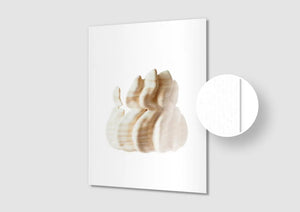
Premium Semi-Gloss Paper
Our premium semi-gloss paper features a subtle sheen, vibrant and consistent colour reproduction, and excellent durability with fade resistance. Ideal for prints with heavy ink coverage, it has a weight of 200gsm (80lb) and is made from FSC-certified or equivalent raw materials.
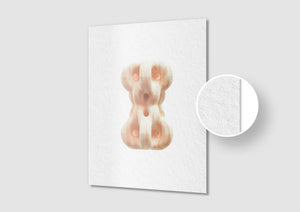
Premium Matte Paper
Our premium matte paper offers a smooth, non-reflective, and luxurious finish with a soft touch. Its ink-absorbent nature can sometimes create a subtle, mottled effect. It has a weight of 200gsm (80lb) and is made from FSC-certified or equivalent sustainable materials.

Natural Pine Frames
Our wooden poster frames are made from durable natural pine wood and come ready to hang. The frames measure 23mm thick by 12mm wide and feature art-quality, shatterproof plexiglass to ensure safe shipping (no glass). Remember to peel off the protective film before you hang!


